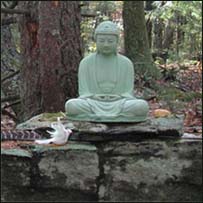|
|
 |
Please support Dharma Seed with a 2025 year-end gift.
Your donations allow us to offer these teachings online to all.

|

|

|
The greatest gift is the
gift of the teachings
|
|

|
| |
|
Dharma Talks
|
2016-12-14
The Revolution of Tenderness - Part 1
1:15:33
|
|
Tara Brach
|
|
|
These two talks explore our capacity to be tender - sensitive and responsive to ourselves and others. This capacity marks a radical evolutionary shift from a self-centered existence shaped by fear, to a life lived from the realization of our collective belonging and the preciousness of all life. The talks examine the conditioning that inclines us toward dissociation and emotional reactivity, and the practices of presence that evolve our heart and awareness.
from Tara’s talk: Pope Francis invites us to “live the revolution of tenderness,” which is expressed through closeness, compassion and service...
|
|
Insight Meditation Community of Washington DC
:
IMCW Wednesday Evening Talks
|
|
|
|
|
2016-12-10
The Novice With An Empty Bowl
24:50
|
|
Ayya Medhanandi
|
|
|
A humble novice with his bowl empty exemplifies where true riches lie in this world. Meditating deep in the unchartered borders within, gain those riches by giving up worldly pursuits. See the value of what is true and what reveals the truth to us. Beyond confusion, beyond wanting, beyond harmful ways of being, purify the mind and seek that jewel of the heart's true peace, clear and free.
|
|
Sati Saraniya Hermitage
|
|
|
2016-12-10
Spirit Rock, The Buddha's Path of Well-Being and Happiness
6:50:32
|
|
Howard Cohn
|
|
|
The Buddha was called 'the Happy One'. His teachings and path provide a clear and inspiring vision of our capacity to use our life to fulfill our goal of happiness. This talk of Insight Meditation will follow the Buddha's Way of mindfulness, concentration and love, illustrating how each of us, through a gradual process of applying loving awareness to our moment-to-moment experience, can move from clinging and attachment to letting go and freedom, from confusion to clarity, and from tension to ease of well-being.
|
|
Spirit Rock Meditation Center
|
|
|
|
|